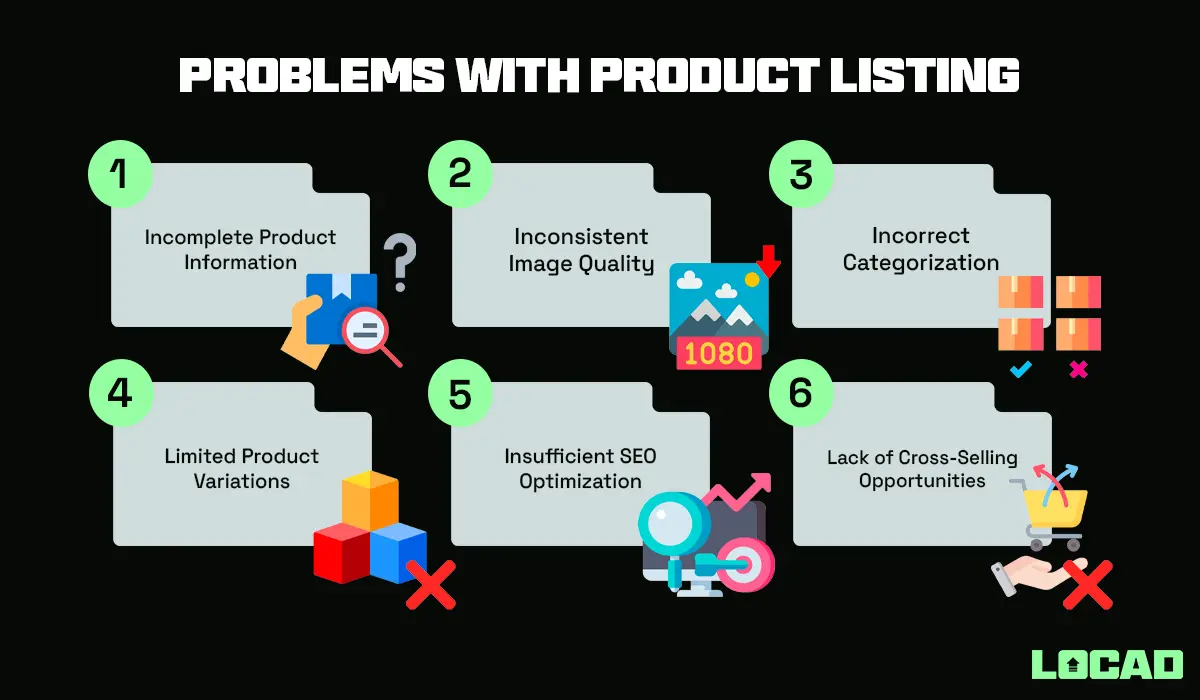Shopify has become one of the go-to platforms in e-commerce today. It has become so popular a choice to host your online store that it has reached a landmark by powering at least 3.5 million different websites across the globe. But as Shopify grows bigger, it has to cater to more websites and subscribers. Although our friends at Shopify are continuously improving its features and offerings to keep up with customer issues, there will come some moments when you encounter some bumps here and there as you use the app. Thankfully, Shopify has employed one of the best customer service teams in the e-commerce world to help you get through the rough patches.
Whichever Shopify subscription plan you choose, you have access to one of the best customer service and technical support when we speak about e-commerce. But sometimes, frequently-encountered problems happen to be pretty simple and would not necessitate contacting Shopify Support. Some common problems are so common that the internet has already provided us with a few steps to pursue, in case we face these issues. These issues are some of the things you can handle yourself – and the good news is we have compiled a list to brief you on it.
What Is Shopify Support?
Shopify Support refers to the assistance and resources provided by Shopify, a leading e-commerce platform, to its users. Shopify offers comprehensive customer support services to help merchants set up, manage, and grow their online stores effectively.
Shopify Support provides assistance through various channels, including live chat, email, phone support, and a dedicated community forum. Merchants can reach out to Shopify’s support team to seek guidance on technical issues, account management, payment processing, theme customization, app integration, and other aspects related to running an online business.
The support team consists of knowledgeable and trained professionals who are well-versed in the Shopify platform. They offer expert advice, troubleshooting assistance, and best practices to help merchants resolve issues and optimize their stores’ performance.
In addition to direct support, Shopify offers a vast library of documentation, tutorials, and educational resources. These resources cover a wide range of topics, including store setup, product management, marketing strategies, and more. Merchants can access these self-help resources to find answers to common questions and learn how to make the most of Shopify’s features and tools.
Furthermore, Shopify has a robust ecosystem of third-party experts and developers who specialize in various aspects of e-commerce. Merchants can hire these experts to provide additional support, design custom solutions, or develop unique functionalities tailored to their specific needs.
Experience fulfillment by Locad today!
Common Issues You Can Troubleshoot Without the Help of Shopify Support
1. Poor Site Performance

Site performance has something to do with the speed at which your site loads when a shopper accesses it. As online sellers, we would want the loading speed of our page to be at the optimum, as an online store with poor site performance may lead to customer loss. A laggy user experience at your online store may affect your conversion rate and overall sales revenue if left unresolved.
Having optimal site speed is also related to ensuring your content is optimized for the internet – and search engines, to be exact. Google, for example, ranks your website higher if it loads fast. A higher SEO ranking would positively impact your website traffic, conversion rate, and sales in an overall sense.
SOLUTION
The rule of thumb is to check for any bugs that might cause loading delays. Make sure you have your pop-ups disabled. It is also best to use a content delivery network. Your website must be optimized for image uploading and a mobile interface. Review your redirects, and reduce them. Make sure you don’t have any broken links.
2. Problems With Product Listing
When you start with a high volume of products that must be uploaded to your catalog, migrating them to your Shopify can be quite a task. It would take a sizable amount of your time should you plan to input them on Shopify one by one.
SOLUTION
List them on a spreadsheet and import them to Shopify using the CSV format. However, owing to factors such as laggy internet or a high data volume, this import process can fail. Remember to have your data backed up so you can repeat the process at a better time. You can also opt to divide your data into smaller spreadsheets and upload them in more digestible batches.
Best Practices for Shopify Product Listing
Discover how to get the best product listings out there in the Shopify platform….

3. Shopify Themes Or App Issues
One of the best features of Shopify is that you can have your store based on a ready-made Shopify Template or Theme. However, some bugs may occur when you purchase and apply a theme or add an application on Shopify.
For instance, you might see unexpected URLs redirecting to links unrelated to your Shopify store. Besides being weird and unnecessary, these can cause lags in your loading speed.
SOLUTION
You can deactivate your redirect by replacing the bit of your Shopify Theme’s JavaScript code that states “window.location.href =” with “window.parent.location.href =”. Otherwise, you can use the JavaScript reference to the window.Shopify.designMode variable to disable the redirect through the theme editor.
During periods when server traffic is at its peak, you might find yourself unable to load your Shopify store. It can either be due to issues in your network connection or an invalid Liquid code. Double-check your internet connection or check the Liquid code to rule out connectivity and coding issues, respectively. If you see no problem with these two things, navigate to “Theme Actions,” then “Preview Theme.” If your page still does not load, then it is best to contact Shopify Support for assistance.
4. Duplicate Content
A common issue that sellers encounter is duplicate content. Shopify sorts your products by tags, but there is the occasional hiccup when a single item is tagged multiple times, such as when your product gets another URL when you put it in a bundle or a collection. All these URLs technically link to the same page, but it could affect how the search engines catalog your pages.
SOLUTION
Use canonical tags. Through self-referencing canonical tags, you can tell Google that the product page is a master copy, which will then be used to place canonical tags on other copies to smoothen and optimize the search engine process.
To place canonical tags, edit your Shopify Theme code, and above the final </head> tag, place this additional code:
5. Management Of Content Across Channels
You might find yourself stressed out managing your products across multiple channels in addition to your Shopify store. You do it in a multi-channel approach and find yourself working from tab to tab to check the communication channels of these separate platforms. A pretty daunting task, right?
SOLUTION
Employ an omnichannel solution. The omnichannel approach differs from multi-channel such that it centralizes all your communication channels into one, allowing for more focused and streamlined management of your marketplaces.
How To Use Shopee Live Selling To Maximize Sales
Shopee Live, a livestream marketing feature, has become a game-changer, revolutionizing how e-commerce sellers connect with their audience. This interactive…
For starters, you can identify the most important channels you use that are key to the success of your business and integrate them with Shopify. You may start with Amazon, Etsy, YouTube, and Tiktok, for example. Branding and pricing must also be unified across these channels. Also, don’t forget to centralize the data in one system so you can quickly look at the metrics for the whole enterprise and not just one marketplace.
6. A High Volume Of Data And Orders

Of course, having a high volume of orders is not a bad thing in itself. It’s a good sign that your business is on the right track. But you still need to keep up with these orders, and although you already have a premium Shopify plan, you experience some delays, especially with financial reporting.
SOLUTION
Consider using an enterprise resource planning (ERP) system and integrating it with your Shopify store. To avoid issues that might arise with the Shopify-ERP integration, make sure you choose the right one. Cloud-based ERP options have an open and well-documented API, allowing them to be easily integrated into your Shopify store. These cloud-based ERPs have reduced IT infrastructure costs and pay-per-use pricing structures that allow them to be affordable even to smaller and medium-sized businesses such as your startup online store.
7. Difficulty In Building Your Customer Base
It might take you to the brink of quitting when you have a difficult time finding customers and establishing a solid and loyal customer base. This is typical for the first few months or even years for an online store, especially for newbie e-commerce sellers, a lot of which are trying their luck out on Shopify. It is one thing to generate traffic toward your website or online store and another to transform site views into actual sales.
SOLUTION
Maximize the built-in Shopify tools for promotion and advertisement. Try to sell your products at special introductory prices. You could also collaborate and have special product placements in more established marketplaces as a form of promotion (just make sure you have your store linked!). Do not forget to make your product and page copy solid.
8. Converting Traffic To Sales
The second half of the problem in bringing about a solid customer base is transforming your website traffic into actual, palpable sales. Bringing up your conversion rate is no easy task and requires a careful and tight-knit strategy to help you pull through. Once you get your customer on the hook when they view your page, you have to take the chance and make them buy your product.
SOLUTION
Launch a conversion campaign through advertisements, promotions, and freebies. Your product listings must be SEO-optimized and at their most enticing and convincing. You can back up your product quality and value by providing promotional Free Shipping options, bundles and combos, and money-back guarantees. And do not underestimate the power of a satisfied customer’s testimonial. Pick the best ones and publish them on your site, and see how it does wonders.
9. Managing Multiple Shopify Marketplaces
Now, your business might have grown bigger and more diversified, but you only have one body and 24 hours a day, and managing your multiple marketplaces can be difficult for you. You also need to have time for yourself and your family. Thankfully, Shopify offers you some options that ease the burden of handling business processes, especially with its size and variety.
SOLUTION
You may opt to subscribe to Shopify’s app partners such as CedCommerce to get assistance in Inventory Status, SKUs Check, Shipping, and Orders across all the marketplaces where you work at.
10. Security Issues
Every Shopify subscription plan comes with top-notch security features designed to protect your personal and financial information. In number, the cost of the data breach was $4.24 trillion in 2021. Although Shopify has one of the best security protocols employed for your online store, we cannot predict how cybercrime perpetrators will attack. And we surely do not want any of these cyber crimes or attacks to happen as they can negatively impact your business ranging from financial loss to reputational damage. You might also be held liable legally and your operations can be severely disrupted in case of a data breach.
SOLUTION
Beef up your online store’s security using the available security tools online, such as multi-layered authentication, SSN (Secure Service Network) verification, and identity checks. To further safeguard your Shopify store from fraudsters, scammers, and hackers, you might need to consider bolstering your store’s security and invest in security plugins that can be integrated with your Shopify store. And don’t let your guard down. Always be on the lookout for suspicious behavior; it wouldn’t hurt to do a periodical security risk assessment and keep yourself abreast with news about these possible cyber attacks. And get those upgrades, security updates, and plugins whenever Shopify offers them to fortify your platform’s security.
Shopify Support In South East Asia
Shopify Support in Southeast Asia plays a vital role in helping businesses in the region establish and grow their online stores. With the rapidly expanding e-commerce market and the increasing number of entrepreneurs and small businesses, Shopify’s support services cater to the specific needs of merchants in Southeast Asia.
Shopify provides localized customer support in multiple Southeast Asian countries, including Singapore, Malaysia, Indonesia, Thailand, and the Philippines. This ensures that merchants can communicate with support representatives in their local languages and receive assistance that is tailored to their specific market requirements.
The support team offers various channels for merchants to reach out, including live chat, email, and phone support. This allows merchants to seek guidance on a wide range of topics, such as store setup, payment gateways, shipping options, and local regulations. The support representatives are well-versed in the unique challenges and opportunities of operating e-commerce businesses in Southeast Asia, enabling them to provide relevant and region-specific advice.
Shopify also provides localized documentation and resources, offering step-by-step guides and tutorials in multiple languages. These resources help merchants navigate through the platform, optimize their online stores, and implement effective marketing strategies that resonate with Southeast Asian consumers.
Furthermore, Shopify has cultivated a network of local experts, developers, and agencies who are well-versed in the intricacies of the Southeast Asian e-commerce landscape. Merchants can tap into this ecosystem to find professionals who can assist with store customization, app development, marketing campaigns, and other specialized services.
Conclusion
Troubleshooting without the help of Shopify Support can be a challenging yet rewarding process for merchants. By following the steps outlined in this article, merchants can effectively diagnose and resolve common issues that may arise while using the Shopify platform. The key is to approach troubleshooting with a systematic mindset, starting with identifying the problem, isolating potential causes, and systematically testing solutions. Utilizing the available resources such as Shopify’s extensive documentation, forums, and online communities can provide valuable insights and guidance. For all your fulfillment and logistics needs, contact Locad, South East Asia’s best logistics provider!
What are the challenges of Shopify?
Some common challenges of using Shopify include customization limitations, reliance on third-party apps for advanced features, higher transaction fees for using external payment gateways, and the learning curve associated with setting up and managing an online store.
Is Shopify support free?
Shopify offers free support through various channels, including live chat, email, and phone. However, the level of support available may depend on the pricing plan you are on. Higher-tier plans often come with priority or 24/7 support.
What is a Shopify technical challenge?
A technical challenge in Shopify could refer to any issue related to the technical aspects of setting up or managing a store, such as integrating custom code, troubleshooting app conflicts, optimizing website performance, or resolving server-related issues.
What makes a Shopify store slow?
Several factors can contribute to a slow-loading Shopify store, including the use of bulky or unoptimized themes, excessive use of apps and plugins, large image files, poor server performance, or inefficient code. Addressing these issues can help improve the speed and performance of a Shopify store.
How do I get help on Shopify?
To get help on Shopify, you can access their support resources, including the Help Center, Community Forums, and Shopify Experts directory. You can also contact Shopify’s support team directly through live chat, email, or phone.













